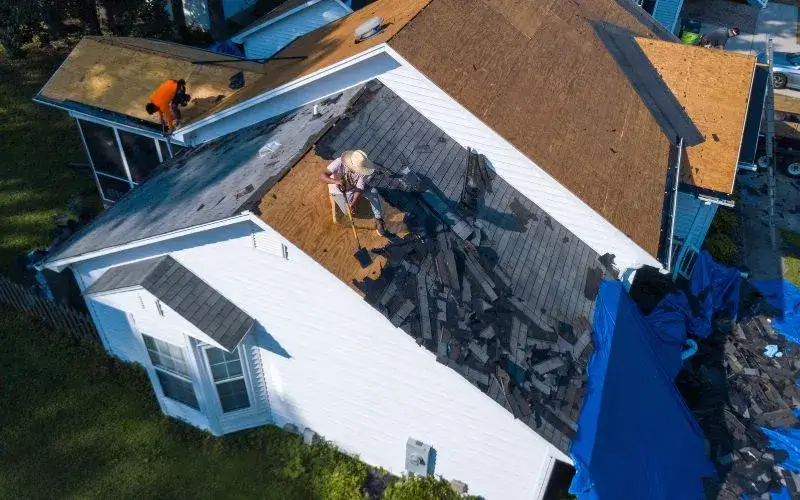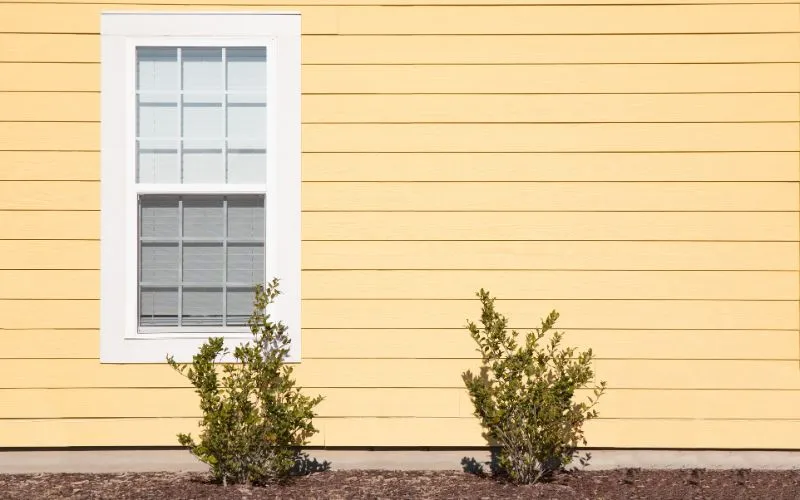What Is Roof Flashing? (Everything You Need To Know)

Have you ever wondered how your roof keeps water out during heavy rainfall? While several important roof components protect against leaks, roof flashing is a crucial piece of the puzzle. By the end of this article, you'll have all the essential knowledge about roof flashing.
What we'll discuss:
- What's roof flashing and its purpose?
- Types of roof flashing
- Roof flashing materials
- Signs that indicate a flashing replacement
- Roof flashing maintenance

What's Roof Flashing?
Roof flashing is a thin piece of material (usually galvanized steel) that is placed in areas on the roof that are prone to roof leaks to redirect water away.
Purpose of Roof Flashing
Roof flashing plays a crucial role in protecting your home and roof against water damage. Properly installed roof flashing is positioned in vulnerable spots on your roof that are prone to leaks, such as walls, skylights, chimneys, and vents.

Different Types of Roof Flashing
Let's go over some of the most common types of roof flashing you'll find on a roof.
Step Flashing
Step flashing is used where the roof meets a vertical surface, typically by walls and chimneys. Step flashing consists of a series of small L-shaped pieces of flashing, each bent at a 90-degree angle. Step flashing is layered under each shingle, allowing water to divert from the roof penetration (wall or chimney) and down the roof.
Apron Flashing
Apron flashing is also L-shaped and is used at the base of a wall or penetration. Typically, you'll find apron flashing around dormers and chimneys.
Counter Flashing
Counter flashing is installed over step flashing by walls and chimneys with masonry or stone to provide a water-tight seal. It's installed into an existing mortar joint and then properly sealing it with some Vulkem sealant.
Roof Valley Flashing
Roof Valley Flashing is only needed for roof materials that cannot bend to "close" the roof valley. Slate and cedar shake roofs are some of the most common roofing materials that require roof valley flashing. However, architectural singles don't require roof valley flashing because they're able to "close" the roof valley.
Common misconception: Many homeowners mistakenly call the visible "stair-step" flashing along walls or chimneys "step flashing" due to its name. However, those exposed pieces of flashing that look like steps are called counter flashing.

Roof Flashing Materials
Flashing comes in several different materials. Let's go over some of the most common flashing materials.
- Galvanized Steel: This is by far one of the most popular roof flashing materials due to its affordability, durability, lightweight properties, and corrosion resistance. However, over time, steel can begin to rust if climates are harsh.
- Aluminum: Similar to steel in terms of durability and rust resistance, aluminum flashing is valued for its even lighter weight, making it easier to handle and install, but it costs more than galvanized steel flashing.
- Copper: Copper is a premium flashing material known for its beautiful patina as it ages and it's often found on luxury homes! Also, copper is resistant to corrosion, making it a great, long-lasting choice.
- Lead: Due to its malleability, lead flashing is great for conforming to complex shapes and contours, making it ideal for intricate rooflines or historical restorations. However, you will see it only sometimes on residential roofs due to its environmental concerns.

Signs You Need a Roof Flashing Replacement
Here are some of the most common signs we find when inspecting roofs that indicate a roof flashing replacement.
- Rust or Corrosion: If your roof flashing is rusting or corroding, these can be signs that you may need a replacement. To add, rusted or corroded flashing is an indicator that it's deteriorating and may no longer effectively seal out water from your home.
- Leaks Near Walls & Chimneys or Skylights: Flashing failure is a common culprit for leaks in these areas. If you notice water stains on interior ceilings or walls near these points, it could be a sign the flashing is compromised and installed incorrectly.
- Cracked or Broken Flashing: Flashing can become damaged due to weather events, age, or poor installation.
- We recommend hiring a roofer so they can inspect thoroughly inspect your roof's flashing.

How to Maintain Your Roof Flashing
Roof flashing is often overlooked by homeowners, but it plays a crucial part in sealing out water from your roof structure. Here are some tips to keep your roof flashing in top shape:
Regular Roof Inspections
Get your roof inspected twice a year by your local roofing company. A reputable roofer should provide you with in-depth information on your roof's condition, including your flashing.
Roof Flashing Cleaning
You can clean your roof flashing yourself or hire a professional roofing company that offers cleaning services. Here are some cleaning tips:
- Gently Remove Debris: Carefully brush away any leaves, twigs, or dirt that might accumulate around the flashing.
- Avoid Harsh Chemicals: Use mild detergent and water to clean metal flashings.
Roof Flashing Repairs
While regular inspections and cleaning can help increase the life of your flashing, there will come a time when repairs or even replacements are needed. For minor issues, homeowners may decide to DIY the issue themselves but proceed with caution.

FAQs
Does flashing go over or under shingles?
It depends on the flashing type. For example, step flashing goes under shingles, while apron flashing may go under or over depending on the application and material.
Is roof flashing necessary?
Roof flashing is absolutely necessary since it plays a key role in preventing leaks where the roof meets walls, chimneys, etc. Roof flashing is an essential component of a waterproof roof.
Do roofers reuse flashing?
Flashing should always be replaced, whether you are replacing your roof or reroofing.
What is the best type of roof flashing?
Picking the best roof flashing material for your home depends on the specific application and roofing material. Common options include galvanized steel, copper, and aluminum.

Conclusion
We hope this gave you a better idea about roof flashing, types, materials, and the crucial role it plays in protecting your home against water damage. If you have any questions, feel free to reach out to us, and we can help answer them!


.webp)


